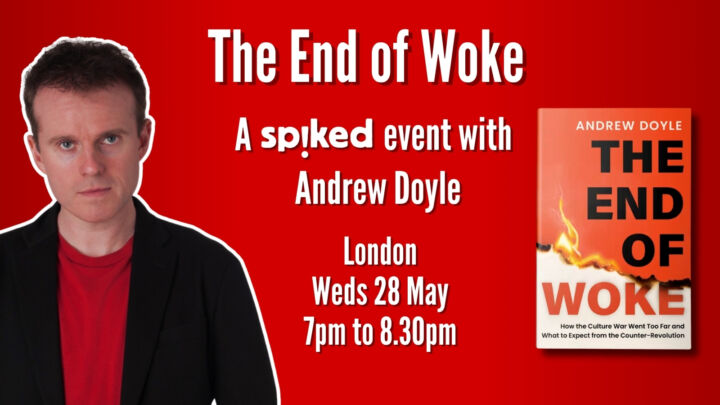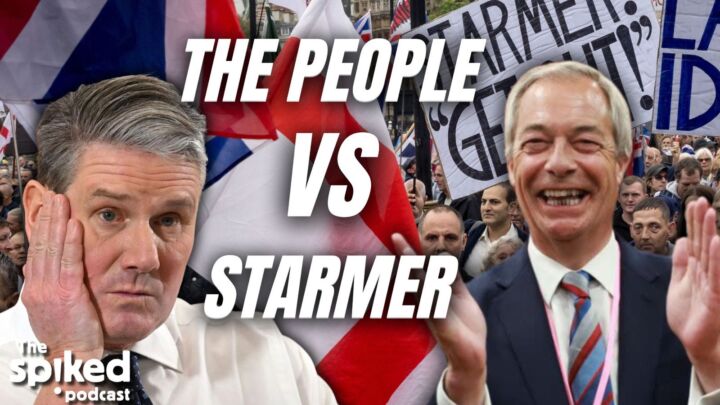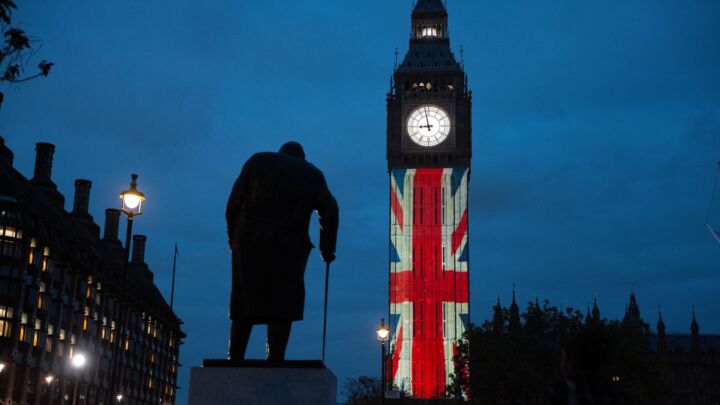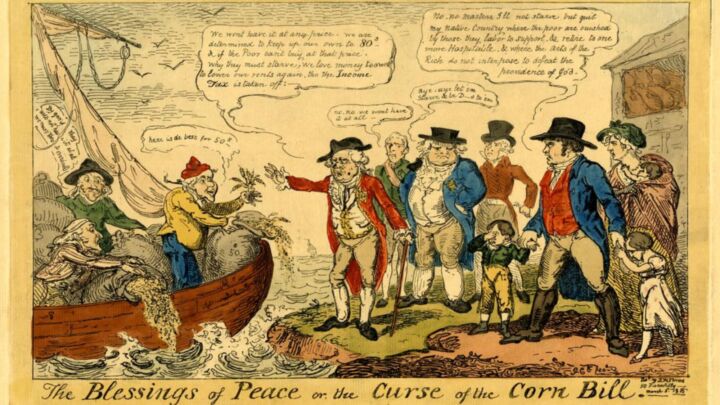
Long-read
Fear, loathing and victimhood
People across the political spectrum now embrace the vulnerable self.
Want to read spiked ad-free? Become a spiked supporter.
‘Active shooter, Multiple Victims.’ It’s a horribly recurrent headline, spreading disruptive fears of victimisation by random violence. Less than two weeks after the December 2015 San Bernardino attack, the Los Angeles school system shut down in response to a bomb threat. Students were sent home or turned back on their way to school in a paroxysm of fear affecting millions of people, served by the nation’s second largest school system. New York’s public schools received essentially the same threat and deemed it not credible. It was ‘so generic, so outlandish’, New York mayor Bill de Blasio remarked. Police commissioner Bill Bratton compared the threat to a story line from the TV series Homeland and characterised the Los Angeles school shutdown as a ‘significant overreaction‘.
‘It’s better to be cautious’, one Los Angeles official explained. But caution should reflect a rational assessment of risk, not a reflex. The more vulnerable you feel, the more vulnerable you become. If you act impulsively out of fear, you’re easy prey to malignant pranksters as well as chest-thumping politicians who warn us we should be scared, in the hope that we’ll elect them to protect us.
From early 20th century red scares to late 20th century school shootings to 9/11, fear and fearmongering have been familiar currents in American life and politics. But they’re particularly strong today and pulling a lot of people under. As journalists speculated in the wake of San Bernardino, fear of daily life stalks many of us. ‘A creeping fear of being caught in a mass rampage has unmistakably settled itself firmly in the American consciousness’, the New York Times surmised, not so unreasonably. Mass shootings in the US erupt with stunning regularity. Most, like the shootings at a Planned Parenthood clinic five days before San Bernardino, are entirely unrelated to Islamist terrorism.
Yes, we’re more likely to be killed or maimed in an auto accident than a random shooting, as commentators never fail to remind us. We should fear the innumerable people driving and texting, or recklessly using firearms, more than the occasional terrorist. Jihadists should probably be low on the list of fears when incidents like this are unsurprising: ‘Two people in separate vehicles were killed by a man who drove along an interstate highway in Oklahoma while randomly firing at cars’, the New York Times reported on 17 December. The suspect was captured and charged with driving under the influence.
But texting, drunkenness and gunplay aside, driving is like walking for many Americans. Its risks (which we can partly control) have long been normalised, unlike the spectre of arbitrary, unpredictable violence intruding on what were once reliably peaceful, everyday activities. The relative frequency of unpredictable ‘active shooter’ crises, in schools, churches, workplaces, movie theatres, hospitals, and other public spaces, in addition to the Paris and San Bernardino attacks, seem to make potential victims of us all.
I mention this not to excuse or explain absurdly exaggerated claims of psychic victimhood pervading American culture and plaguing hysterically censorious campuses, but to acknowledge the fearful climate in which they occur. Terrorism isn’t responsible for America’s frequently and deservedly criticised culture of victimhood – it emerged decades ago – but victimhood can feed on the pervasive fear that terrorism generates.
Why doesn’t fear of being murdered in a random attack, however unlikely, overshadow fear of being emotionally unsettled by offensive words and ideas? Shouldn’t the threat of actual violence provide perspective on merely metaphoric verbal violence and the fear of ‘unsafe spaces’ open to debate? Perhaps, unless feelings of helplessness sparked by random murders metastasise, exacerbating a general sense of vulnerability.
Besides, fear of violence isn’t the only source of general public anxiety. It’s also rooted in changing demographics and economic displacement, as the surprisingly successful presidential campaigns of billionaire braggart Donald Trump and democratic socialist Senator Bernie Sanders suggest. In varying combinations, the lingering effects of the great recession, technological disruption, racial tensions, student debt and income inequality have fuelled the unlikely campaigns of these strikingly dissimilar candidates.
Sometimes people who feel vulnerable are vulnerable, economically or physically. (Gun violence has long terrorised communities decimated by the war on drugs.) Sometimes people are victims (as others are beneficiaries) of circumstances or birth. In an idealised America, you have opportunities to rise above your circumstance; upward mobility is our proverbial dream. But it has a declining hold on millennials. Some 30 per cent of 18- to 34-year-olds have lost faith in the American Dream, according to a Washington Post report, which implies that they’ve lost faith in their ability to shape their own futures.
We can’t simply dismiss this loss of faith as a symptom of cultural or psychological malaise. For some people, it reflects a rational assessment of economic or educational realities. But others who are not unduly limited by circumstance sometimes choose victimhood, adopting fashionable assumptions about their fragility and subordinate status.
There are, after all, substantial advantages to declaring yourself disadvantaged. Victims never have to say they’re sorry. Apologies – and accountability – are for victimisers. Victims are creditors, owed not just compassion but practical relief, like the power to censor whatever they consider offensive speech. The expression of unwelcome images or ideas in the presence of self-identified victims is labelled another form of victimisation, as student demands for trigger warnings and ‘safe spaces’ suggest.
Campus censorship crusades and underlying claims of victimisation date back a quarter century, but became headline fodder last year as they devolved into self-parody. You don’t have to bother critiquing accusations of ‘cultural appropriation’ levelled against school cafeterias serving ethnic food; you only have to repeat them: Sushi is part of a ‘culturally appropriative sustenance system’, students at Oberlin College explained. ‘[T]he undercooked rice and lack of fresh fish is disrespectful.’ You needn’t bother arguing with people who condemn as a ‘microaggression‘ your opinion that ‘the most qualified person should get the job’. The ‘racism’ reflected in that belief and the presumed harm of expressing it are unlikely to be considered debatable. Indeed, if you challenge the theory of microaggressions or a list of offending phrases you’ll be accused of ‘silencing’ their victims.
Free inquiry is unnecessary to people convinced they have absolute truth on their side. It’s considered unfair or abusive to people presumed to require the suppression of contrary ideas in order to be ‘free’ to express their own. In this perverse and nonsensical view, freedom lies not in de-regulating speech but in re-regulating it, to protect a growing list of victim groups.
Why are so many students considered so fragile and vulnerable to language and ideas they find offensive? How did unwelcome words become conflated with hostile actions, equally capable of inflicting grievous harm? In part, (as I’ve noted here), you can trace fear and loathing of free speech to the confluence of three movements. Pop therapies of the 1980s characterised virtually all of us as traumatised victims of familial abuse, in the form of verbal as well as physical assaults. At the same time, the feminist anti-porn movement framed pornography as rape, the subordination of women, and labelled it a civil-rights violation. Then, in the early 1990s, advocates of campus diversity adopted a similar view of offensive speech as actively discriminatory – a view enforced by restrictive speech and harassment codes. By now, successive generations of students have been taught to regard free speech as the enemy of equality and simple human decency.
Who may qualify as a victim – subordinate or even oppressed and, therefore, entitled to restrict other people’s liberties? On many campuses virtually anyone except a narrow category of white, heterosexual (or cisgender) Christian or Jewish men who aren’t obese, physically or mentally disabled and haven’t been sexually abused can claim membership in a disadvantaged group. In some circles, off campus, the opposite is true: virtually no one except white heterosexual Christians can lay claim to being victimised – by a ‘war’ on Christmas, secularism, gay marriage and the ‘homosexual agenda’, affirmative action’s ‘reverse discrimination’, and immigration, whether involving Mexicans, Muslims or others from whom members of a dwindling white majority aim to ‘take our country back’. Visit a progressive campus immediately before attending a Donald Trump rally or browse a right-wing Christian website and your head will be spun by polarised versions of reality and victimisation.
Identity politics and the victimism it fuels are non-partisan, inter-generational phenomena. Their virulence on college campuses struggling with diversity has recently earned quite a lot of appropriately scathing criticism that needn’t be repeated here. Less attention has been paid to the victimism thriving off campus. Listen to the Cassandras at the conservative Christian Liberty Counsel warn that Christmas celebrations could someday become illegal and extinct: ‘Repressive forces have always had the same goal – to first secularise and then to eliminate Christmas. We need to be perpetually vigilant and grateful every year for the freedom to celebrate.’
What’s the basis for concern about the right to celebrate Christmas in America, where Christians compose about 70 per cent of the population (and most of Congress)? The Liberty Council cites constitutional challenges to sectarian displays on public property – as if your right to celebrate a religious holiday necessarily includes the power to make sure everyone else celebrates with you. Another perennial manifestation of the ‘threat’ to Christmas is the tendency of department store clerks to wish their customers a ‘happy holiday’. This annual offence was exacerbated in 2015 by the failure of Starbucks to write Merry Christmas on its holiday cups. Such is the nature of religious persecution endured by self-proclaimed victims of America’s ‘war’ on Christmas.
Meanwhile, across the religious divide, atheists sometimes feel victimised, too, as a small, maligned minority, generally considered bereft of any moral compass. Non-theist organisations, like American Atheists, delight in erecting billboards mocking Christmas (and religious belief generally); but their insults threaten nobody’s rights. Their power to annoy far outweighs their numbers and imperceptible political influence. But atheists who give offence aren’t always willing to take it. A 2011 American Atheist lawsuit challenging the display of a cross at the 9/11 memorial claimed that it harmed non-believers by causing ‘dyspepsia, symptoms of depression, headaches, anxiety, and mental pain and anguish from the knowledge that they are made to feel officially excluded from the ranks of citizens who were directly injured by the 9/11 attack’.
Who’s doing what to whom? That is the question posed by identity politics and our debased legal and political discourse. Framing ideological opponents as either victims or oppressors exacerbates the rigidity of identity groups and invites authoritarianism, right and left. By reflexively declaring yourself a victim, you doubt or diminish your own agency and encourage appeals by demagogues who confirm your angry sense of impotence and promise to take charge – to be strong where you are weak. That is one ominous lesson of the Trump campaign, an exemplary and often overlooked exercise in victimism and identity politics.
Like the political-correctness crusades he disdains, Donald Trump relies on constituent feelings of victimhood. He assures his supporters that they have reason to be scared and resentful and exhorts them to feel besieged – by incompetent politicians, immigrants and terrorists. Ask Trump how he will ‘make American great again’, eliminate the threat of terrorism, restore economic security, end illegal immigration and make sure that store clerks wish everyone a Merry Christmas, and he’ll respond with some variant of ‘When I am president, America will be great again because I know how to make it great’. In other words, America’s greatness with Trump at the helm would be a Triumph of His Will.
It’s not surprising that Trump’s liberal and conservative critics hear echoes of 20th-century European fascism in his strong-man appeals to a collective that feels victimised and under siege. But his implicit assertion that he can achieve virtually any desired outcome merely by willing it is not a European import. It reflects a classic American tradition of positive thinking, popularised by Trump mentor and pastor, Norman Vincent Peale. ‘He was so great’, Trump recalls. ‘He would give a sermon and you never want to leave… you could listen to him all day long.’
Peale’s excruciatingly banal, mid-20th-century mega-bestseller, The Power of Positive Thinking, pointed to a ‘lack of self-confidence’ as America’s greatest problem. It’s clearly one from which Trump does not suffer. Some cite his paper-thin skin as a sign of insecurity, but responding to the slightest criticism with schoolyard insults has been an effective political strategy for him. Besides, Peale’s version of confidence didn’t exactly involve self-esteem – faith in yourself – so much as faith in a higher power. ‘Accept God’s will’, Peale wrote. ‘Ask for what you want but be willing to take what God gives you.’
Peale preached a gospel of empty headedness, recommending ’empty(ing) your mind at least twice a day… of fears, hates, insecurities, regrets and guilt feelings’. Having emptied your mind, turn it over to God, he advised, and practice affirmations like this: ‘God is now filling my mind, with courage, with peace with calm assurance… God is now guiding me to the right decisions.’
If you ‘learn to expect, not to doubt’, you’ll get what you want, Peale asserted, as long as God wants you to get it. This suggests that highly successful people, like Donald Trump, are God’s chosen. Through the ‘magic of believing’, (and His apparent sponsorship), they get what they want just by wanting it.
This is positively magical thinking. It owes much to 19th-century notions of mind cure and Christian Science and has helped shape over a century of America’s personal-development fads. How has positive thinking, in its various incarnations, contributed to the culture of victimhood?
While, on the surface, it appears to preach self-reliance, in essence, positive thinking promotes conformity and automatic behaviours. It conditions what Peale calls the ‘magic of believing’, the alchemy that transforms desire into reality, on recognising that you lack independent agency and that success entails submission to higher powers, both earthly and divine. Positive thinking, the ‘science’ of faith, requires adherence to techniques that Peale (and other experts) prescribe – mind-emptying, the rote recitation of affirmations, prayer and visualisation. Trump practices an unabashed, public form of affirmation therapy, obsessively asserting his power and worthiness not to himself but before hundreds or thousands of supporters: the crowd is his mirror. Greatly exaggerating his own agency, he appeals to people who doubt their own, offering to exercise his vaunted power and expertise on their behalf.
The political consequences of pervasive victimism are, however, not limited to personality driven, strong-man visions of leadership. They include the decline of free speech, obviously, as campus language phobias demonstrate. They extend to the decline of democracy. ‘What makes a man a political being is his capacity for action’, Hannah Arendt wrote. Democracy depends on citizens who have faith in their own agency, as well as the opportunity to exercise it, by speechifying, organising and voting. While recent state legislative limits on voting rights are primary threats to American democracy, so is voter apathy, reflecting, in part, a lack of faith in the efficacy of individual action. Victimism turns appropriate scepticism about politicians and the political process into nihilism, with its mistrust of facts and reliance on attitudes in their stead.
For politically disaffected people who suspect that ‘every statement (is) a lie anyway’, Arendt wrote, ‘the truth is simply what one chooses to believe’. Or who one chooses to believe, she might have added. As the successful use of lies or ‘misstatements’ in America’s current presidential race demonstrates, people choose to believe politicians who confirm their attitudes, biases, and fears and claim to be on their side. Like perceptions of victimhood, facts become mere matters of preference or perspective.
And, just as there are few more or less neutral facts in a society divided by competing claims of powerlessness, there is also little support for neutral principles and applications of law. But oppose legal neutrality and you oppose civil liberty. It requires extending the same rights and freedoms to everyone, regardless of status or ideology, and that, indeed, is precisely what campus censors protest. They regard free speech as just another instrument of power wielded against the relatively powerless, which means that speech rights should be conferred discriminately on anointed victim groups and denied to their victimisers. Thus equality is supposed to derive from the unequal distribution of rights. Go figure.
This perverse vision of equality also requires civil-rights laws protecting victims from emotional distress and affronts to social status or self-esteem. The recent Supreme Court ruling upholding a constitutional right to same-sex marriage (which I support) relied partly (and unnecessarily) on a newly conceived right to equal dignity. What does it entail? Where in the Constitution might we locate a right to dignity? What legal standard defines its violation? Without simply relying on their own beliefs and preferences, how might judges and legislators decide when one person’s dignity should prevail over another person’s freedom of speech, religion or privacy?
Dignity is a treacherously subjective concept, as legal commentators (see Jeffrey Rosen and Jonathan Turley) have observed. While invoked to extend marriage rights to gay couples, dignity claims are more often used to restrict rights and freedoms than to expand them, as battles over free speech make clear. The insistence that regulatory authorities protect the dignity and emotional wellbeing of presumptively disadvantaged groups is codified in campus speech codes and West European bans on allegedly hateful speech. Laws like these, imbuing select groups with ill-defined, emotional rights, reflect the anti-libertarian, therapeutic notion of justice that naturally accompanies a culture of victimhood. Considering this confusion of justice and therapy, we might recall what the Supreme Court once said about the union of government and religion: ‘[It] tends to destroy government and to degrade religion.’ Therapeutic justice delivers neither therapy nor justice; instead it empowers the state at the expense of the people.
Individual dignity is not a gift or entitlement bestowed by government. It’s rooted in freedom from government – notably freedom of speech and conscience. While government officials are obliged to respect, and act to protect, the dignity of people in their care and control, they can best respect the dignity of everyone else by not acting to protect it. Only a paternalistic, authoritarian state will seek to avenge the wounded dignity and emotional distress of private actors in private disputes, like parents punishing their children for schoolyard bullying. Victimism is infantilising. A democracy rich in rights and liberty is the business of adults.
Wendy Kaminer is a lawyer and writer, and a former national board member of the American Civil Liberties Union. She is the author of several books, including: A Fearful Freedom: Women’s Flight from Equality (1990); I’m Dysfunctional, You’re Dysfunctional (1992); and Worst Instincts: Cowardice, Conformity and the ACLU (2009).
Who funds spiked? You do
We are funded by you. And in this era of cancel culture and advertiser boycotts, we rely on your donations more than ever. Seventy per cent of our revenue comes from our readers’ donations – the vast majority giving just £5 per month. If you make a regular donation – of £5 a month or £50 a year – you can become a and enjoy:
–Ad-free reading
–Exclusive events
–Access to our comments section
It’s the best way to keep spiked going – and growing. Thank you!






Comments
Want to join the conversation?
Only spiked supporters and patrons, who donate regularly to us, can comment on our articles.